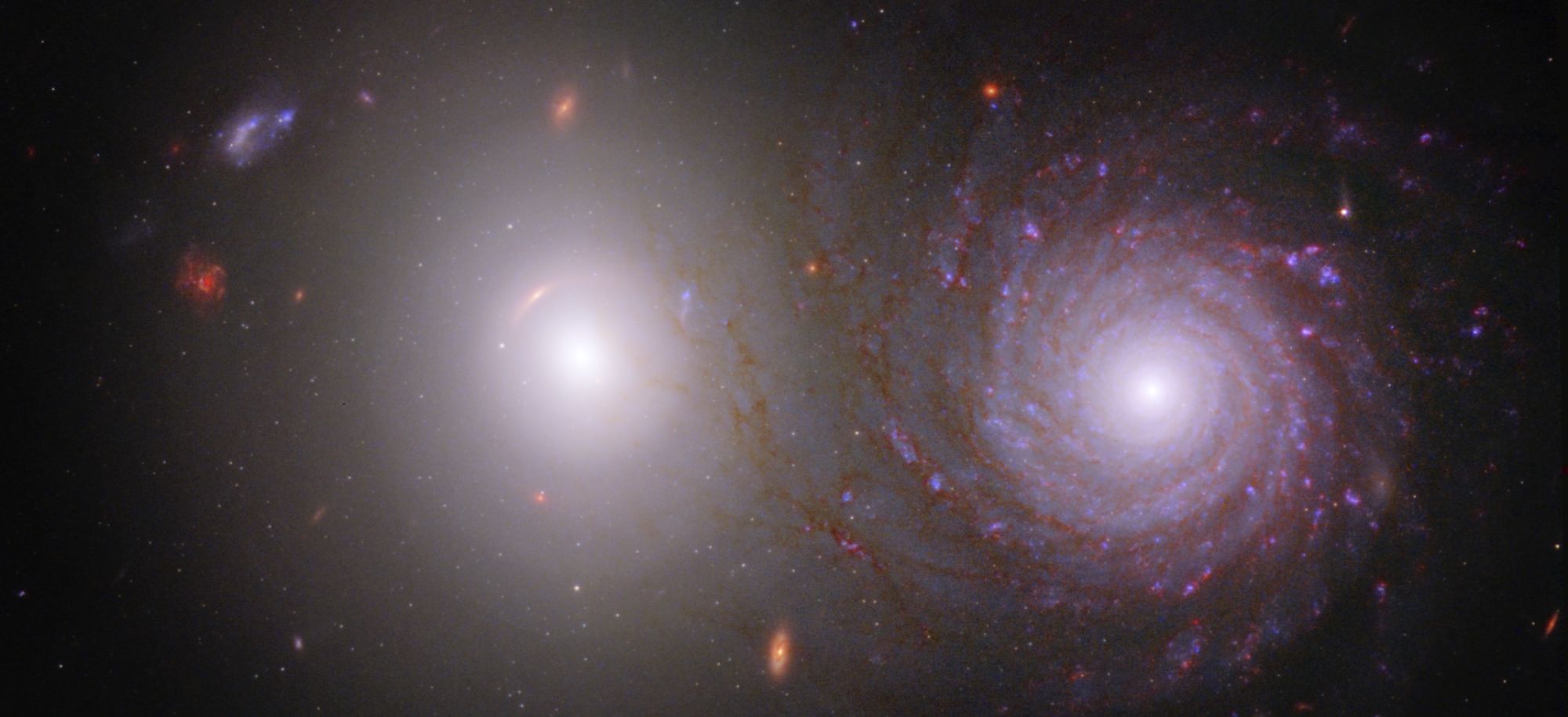
Our cosmologists have found an answer to why spiral galaxies like our Milky Way are largely missing from part of our Local Universe called the Supergalactic Plane.
The Milky Way is embedded in the Supergalactic Plane - an enormous, flattened structure extending nearly a billion light years across.
While the Plane is teeming with bright elliptical galaxies, bright disk galaxies with spiral arms are conspicuously scarce.
Distributions of elliptical and disk galaxies
Now an international team of researchers, including Durham University, say different distributions of elliptical and disk galaxies happen naturally because of the contrasting environments inside and outside the Plane.
In the dense galaxy clusters found on the Supergalactic Plane, galaxies experience frequent interactions and mergers with other galaxies.
This transforms spiral galaxies into elliptical galaxies – smooth galaxies with no apparent internal structure or spiral arms.
By contrast, away from the Plane, galaxies can evolve in relative isolation, which helps them preserve their spiral structure.
SIBELIUS supercomputer simulation
The research team carried out its research using the SIBELIUS (Simulations Beyond the Local Universe) supercomputer simulation to carry out their research.
SIBELIUS follows the evolution of the Universe over 13.8 billion years from the early Universe to the present day in precise detail.
The simulation it has produced is remarkably consistent with observations of our Universe through telescopes.
It reveals the intimate details of the formation of galaxies such as the transformation of spirals into ellipticals through galaxy mergers.
The simulation also shows that the standard model of the Universe, based on the idea that most of its mass is cold dark matter, can reproduce the most remarkable structures in the Universe, including the spectacular structure which is home to the Milky Way.






